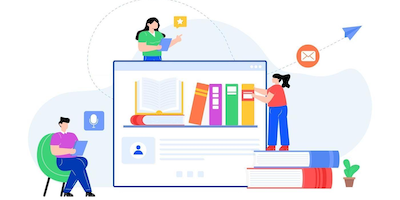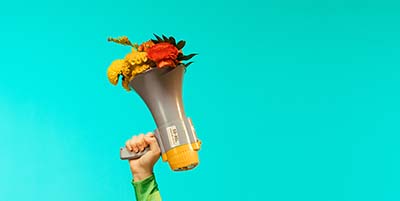Your Cart is Empty
6 Ideas for Marketing Your Book on the Cheap
September 07, 2021 6 min read

I’ve heard so many authors complain that what they hate the most about the publishing process isn’t querying or editing, it’s marketing. And no wonder.
Marketing requires a completely different set of skills and has nothing to do with your ability as an author.
If you are an author signed by a large traditional publisher, congratulations. Your publisher will be directly involved in marketing your book. But if you are an indie author, you’re largely on your own.
I’ve tried many different strategies for marketing my books. What I found is that the cost of marketing can often exceed any profits I can earn. In other words, I lost money.
Let me run through the different marketing tools, but first a disclaimer. I am not a marketing pro. You may have more success with strategies that didn’t work for me.
1. Social Media
You probably have noticed some authors follow tens of thousands of people on social media. They generally have an equal number following them. These authors will post multiple ads each week or even each day on their social media feed promoting their books.
I’m sure you’ve seen the ads. If you follow enough of these authors, your social media feed will be clogged with their promotions. If you unfollow them, you will quickly be unfollowed as well. They aren’t interested in connecting, just in promotions.
This form of marketing is inexpensive but requires you to build a significant list of followers.
It’s also ineffective for several reasons. A lot of those followers may not be readers.
If they are readers, they might not be interested in your genre. As well, if they are being bombarded with book promos, they will eventually scroll right by the ads.
I’m not against using social media. I sell some books this way. It just shouldn’t be the only marketing tool you use.
2. Paid Social Media Ads
I’ve tried purchasing ads on Facebook and Amazon. I’ve also tried promoting through vendors who will send out promos for you on their social media accounts for a fee.
I have never broken even on any of these approaches. I’m not saying they won’t work for you.
Ads are expensive and if your profit margin on books is low, it’s hard to make money.
This approach makes sense when you are selling services valued at several hundred dollars as opposed to the cost of a book. As a result, you need high volumes to break even.
3. In-Person Events
I love attending in-person events where you can interact with readers. This includes book signings in stores and malls, book fairs, flea markets, and farmers’ markets.
I might sell anywhere between 5 to 20 books in a day depending on the size of the crowd. Your cost is the price of a table or stall. It’s often possible to share tables with other authors to reduce the cost.
Bookstores will generally just take a commission on each book sold. For in-person events, you will need to invest in book displays and banners.
These events are time consuming and there are only a limited number of these opportunities each year.
During COVID lockdowns, the only opportunities available have been virtual events, which are not nearly as effective. In September 2020, I sold 1 book at a virtual event. I sold 16 books at the same event in 2019 the last year it was in-person.
4. Online Influencers
Why not use others to promote your books? There are three types of online influencers: podcast interviewers, YouTube reviewers and bloggers who review books. The catch is that you want to find influencers with large followings. Otherwise, they aren’t much of an influencer.
Book reviewers are great, but the most desirable influencers are podcasters.
A podcast allows you to speak directly to potential readers. You will be able to talk about yourself, your books, and your writing process. Typically, you will be able to do a reading. Podcasts are available on iTunes, Spotify, and several other services.
The trick is persuading a reviewer or podcaster to feature your book. I email podcasters providing information about myself, what’s unique about my book (the hook), and how I can entertain their audience. It’s much like a query letter.
Remember, they get a lot more requests than they can handle, so you need to do your homework. The best part about online influencers is that it’s FREE!
5. BookBub
BookBub is basically an email service. Readers can sign up for a series of emails that alerts them to quality ebooks at deeply discounted prices. It’s inexpensive for authors relative to Facebook or Amazon ads.
It can’t be used to sell paperback or hardcover books, but because the ads direct potential buyers to Amazon, it gives you a lot of visibility.
The company sends out emails to thousands of readers each day.
BookBub’s email lists are huge. The cost of having BookBub include one of your books varies depending on the price of your book and which newsletter you want to be featured in.
They’re willing to consider permanently free books, but in general, they’re looking for book deals that are deeply discounted.
BookBub wants to give their readers the best deals, so try to offer your book free (if it’s the first in the series) or for $0.99. They usually won’t feature anything above $2.99, and they’re unlikely to feature your book at that price if it’s always priced there.
You decide on how much to budget each day and that will determine how many people your ad will reach and which types of readers to send the ads to.
Similar to social media ads, BookBub will provide you with metrics on how many people see your ad (impressions), how many people click on your ad, and cost per click and 1,000 impressions.
You can play around with your ads, budgets, and demographics to maximize your sales. BookBub will only show your ad to a reader 4 times. Change or pause your ads after 7-10 days if it doesn’t perform well.
You want to have a click rate of at least 2%. That means for every 100 impressions, two people click on your ad. You want to see at least 1 sale for every 10-20 clicks.
6. Build Your Own Email List
What I’m currently working on is building an email list. I send out a monthly newsletter to connect with my subscribers and provide incentives to remain on the list.
The idea is that when my next book is released, I will have a list of subscribers who I can promote my book to.
So, what do you need to do to build a list? Well, you will need to have a regular newsletter with new issues released every 2-4 weeks. Less frequent, and subscribers will forget about you.
You will need a platform on which to produce your newsletters and collect emails. There are many platforms, and each has its advantages and disadvantages. Costs and functionality will vary.
I am using MailChimp because it’s free until you reach a certain size. Once you exceed that threshold, it becomes costly.
The most important piece is what is called a content magnet.
You need to provide readers with something that they will want to have in exchange for their email. I wrote a prequel to my second book and designed attractive cover (it’s part of the hook), which I provide for free for those who sign up for my newsletter.
It doesn’t have to be a book, but it needs to be something that will get people to provide their email. A free chapter from a book will not work. But the first book in a series would be great.
I use Bookfunnel to assist in attracting new subscribers to my newsletter—it’s a hosting service for ebooks. There are other similar providers.
For a low cost, I set up a landing page for each of my books including the free one. Then I sign up for sales promos and newsletter builders each month.
I include links for each promo I sign up for each month in my newsletter. A promo may have 100 or more ebooks for people to buy or download for free. The link takes you to a page with all the books included in the promo.
If a person clicks on your book, your landing page will pop up. If it’s a sales promo your landing page will take them to your Amazon (or another bookseller) page. If it’s a newsletter building promo, they can exchange their email for the free download.
I’ve built up an email list of over 800 in less than a year.
Some people will unsubscribe once they have your freebie. My experience is that only 15% have been unsubscribing.
My goal is to reach a couple of thousand subscribers and if 15-20% buy my next book, that’s a good number of sales.
There are lots of inexpensive ways to sell your books. You should adopt several strategies to maximize your sales, but all these marketing tools eat up your time.
Time you could be writing. If your goal is also to sell books once they’re published, then you need to make time for marketing.
Leave a comment
Comments will be approved before showing up.
Also in So You Want to Write? Blog

How to Build an Author Platform to Market Your Work
November 07, 2022 4 min read
Here's how to build an author platform that attracts readers that will buy your book(s).
Read More
4 Types of Writers, and How to Set Goals According to Your Type
October 31, 2022 7 min read
Here's how to set writing goals that actually stick, and inspire you to become the best writer you can be.
Read More
